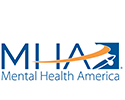Social Determinants of Health Create Barriers to Care
Social determinants of health (SDOH) are the non-medical factors that influence health outcomes. They are the conditions in the environment where people are born, live, learn, work, play, worship, and age that affect a wide range of health, functioning, and quality-of-life outcomes and risks.
SDOH contribute to wide health disparities and inequities. For example, people who don’t have access to grocery stores with healthy foods are less likely to have good nutrition. That raises the risk of health conditions and even lowers life expectancy relative to people who do have access to healthy foods.
This year, Real World Health Care will focus on two key SDOH issues: food insecurity and transportation insecurity. We’ll share insights and practical solutions from organizations working to break down these barriers to care and create more equitable conditions for patients.
What is Food Insecurity?
Food insecurity is defined as a household-level economic and social condition of limited or uncertain access to adequate food. In 2021, 13.5 million households comprising 33.8 million people were food insecure at some time during the year. Food insecurity may be long-term or temporary and can be influenced by neighborhood conditions, physical access to food, and lack of transportation. It has increased dramatically since the start of the COVID-19 pandemic.
Impact of Food Insecurity on Cancer Management
Studies have suggested that food insecurity likely contributes to the development of chronic disease in some cases (through nutritional and behavioral pathways), whereas chronic disease likely contributes to the development of food insecurity in other cases (by increasing health care expenditures and decreasing employability). A 2022 study found that 32% of cancer survivors (those with a self-reported cancer diagnosis) were food insecure.
Health researchers, in a recent commentary in the journal Cancer, reviewed numerous studies about the link between cancer and food insecurity, several of which found that the prevalence of cancer increases as the severity of food insecurity increases. The studies they reviewed also found:
- Diets high in animal fat increase the risk of breast, colon, pancreatic and prostate cancer, whereas diets high in fruits, vegetables and whole grains may be protective.
- Severely constrained food budgets in food-insecure households may complicate the cachexia and anorexia experienced by patients with cancer.
- Individuals in food-insecure households prioritize foods with refined grains and added sugars, salts and fats because they are generally less expensive than healthier foods and their longer shelf life protects against the expense of food spoilage.
- When healthy foods are available in low-income communities, they often are of poorer quality.
- Food insecurity can be a significant driver of cancer distress, which can lead to treatment non-adherence, increased use of outpatient and emergency department care, greater difficulty in decision making, and poorer quality of life.
When cancer patients experience food insecurity and cannot adhere to their medication regimen, the risk for disease complications increases. In one study, 55% of patients with food insecurity did not take their medications because they were unable to afford them, compared to 12% of their peers that were food secure.
In the Cancer commentary, the researchers note that no formal recommendations for food insecurity screening exist in the oncological clinical setting. However, they point to the Hunger Vital Sign™ (HVS), a two-question screening tool that has been validated in both adult and pediatric patients. (Editor’s Note: The USDA also offers the U.S. Household Food Security Survey Module developed by the National Center for Health Statistics.)
The researchers also point to several resources and interventions for food-insecure patients, including the Supplemental Nutrition Assistance Program (SNAP), local food banks, home-delivered meals and community programs that may mitigate food insecurity by providing food or money for food. They also note that non-food resources, such as prescription payment assistance programs, can help to relieve food budgets by allowing for the shifting of household expenses.
What is Transportation Insecurity?
Transportation insecurity can be defined as a condition in which one is unable to regularly move from place to place in a safe and timely manner because one lacks the material, economic or social resources necessary for transportation.
According to research from the University of Michigan, one in four adults in the U.S. experience transportation insecurity, making it difficult for them to hold a job, get to the grocery store or child care, and conduct other daily activities. The researchers note that problems with transportation are commonly cited as a primary reason people miss or delay medical appointments or leave prescriptions unfilled, with consequences for individual health outcomes.
Impact of Transportation Insecurity on Cancer Treatment Adherence
In 2021, the National Cancer Policy Forum of the National Academies of Science, Engineering, and Medicine sponsored a series of webinars addressing key social determinants of health, including food, housing, and transportation among patients with cancer. In a commentary article summarizing the webinar series, experts noted several reasons that transportation insecurity is an acutely important problem for patients with cancer:
- Patients with cancer are particularly susceptible to transportation as a barrier to medical care, with higher rates of transportation insecurity relative to similar patients without a history of cancer.
- Transportation insecurity among patients with cancer is common.
- The consequences of transportation insecurity among patients with cancer are substantial and may result in patients forgoing, missing, delaying and/or altering necessary clinical care.
- Transportation insecurity has the potential to increase rates of cancer recurrence and mortality as well as exacerbate disparities in cancer incidence, severity, and outcomes.
In an effort to gain insights into who experiences transportation insecurity and help others determine which interventions can improve transportation insecurity, the University of Michigan researchers developed and validated a Transportation Security Index, the first tool to measure transportation security. Modeled after the Food Insecurity Index, the Transportation Security Index is a 16-question survey composed of items that focus on the symptoms of transportation insecurity.
Among many potential uses for the Transportation Security Index, the researchers suggest that health providers and social workers use the tool to screen patients to identify whether they need transportation-related assistance. Such assistance may be available through local transportation authorities or via grants from non-profit organizations like the HealthWell Foundation, which offers transportation assistance through several travel funds.

















